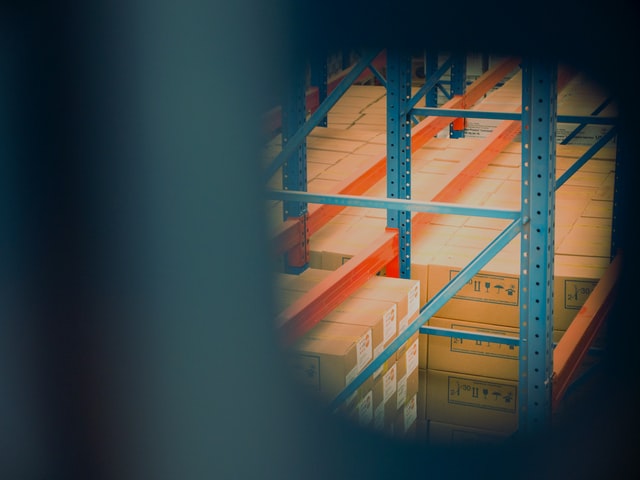6 Ways to Make Your Supply Chain More Sustainable
This is a guest post by Adrian Jacobs.
It is the dream of every business involved in logistics to have a robust and failure-proof supply chain. Unfortunately, this is simply impossible. What you can do, however, is take advantage of six ways to make your supply chain more sustainable and, therefore, safer!
1. Know Your Supply Chain Inside Out
In order to make your supply chain more sustainable, you need to know exactly what areas to target and your weak points. So, take the time to map your supply chain comprehensively. Identify your environmental challenges, inventory your suppliers, check over shipment problems you’ve had, and review your employees’ performance.
Do a major audit of your business and its supply chain. You cannot afford to let any part of your business drag you down. Having a warehouse manager who doesn’t even understand the difference between inventory management vs. warehouse management is one of those things. Nor can you afford to continue using shipping routes that clearly have a high accident rate and are often congested.
Besides, even though you likely once knew everything about your supply chain, you might be surprised by the changes that have slipped by you in the meantime.
2. Evaluate Your Supplier Performance
Suppliers are always a potential weakness for your supply chain.
No matter how well the rest of the system functions, it’s useless if you have no goods to move through it. So, you need to ensure that your suppliers meet your baseline expectations.
One of the ways logistics businesses have been doing this recently is through baseline assessment questionnaires and surveys. They should be submitted to your suppliers for self-assessment and completed by your employees. Any discrepancies should be closely looked into. If a supplier is satisfied with their performance despite the data you have that reflects poorly on them, then you should look for an alternative. It is not your job to improve their business.
Your task is to find the best quality goods for your customers. Of course, work to overcome problems if your supplier is willing to cooperate.
3. Invest in Employee Training
You cannot make your supply chain more sustainable without sufficient support from your employees at every level.
Warehouse managers need to be able to handle the quick turnover of goods. Warehouse employees need to be fast and efficient. Truckers must know how to properly maintain their vehicles and keep themselves and their cargo safe. And obviously, higher-level managers need to have a keen eye for spotting problems and handling them before they grow bigger.
This is all easier said than done. Especially when the law actively starts working against you, such as in the case of Californian law attacking truckers and the supply chain.
One of the biggest challenges in the industry is the quick turnover of employees. In other words, you need to find ways to incentivize them to stay or constantly bear the cost of training new batches, all the while knowing they will leave.
4. Make the Necessary Equipment Investments

Your supply chain is highly reliant on your available equipment.
You may have trucks that are the lifeblood of your business, and if they are not adequately maintained, you will start racking in losses faster than you can make money. As the experts from divinemoving.com point out, the better the state of your trucks, the faster and more safely you can complete deliveries, too! Of course, this is hardly the extent of investing in equipment.
It would help if you looked toward new tech to make your supply chain more sustainable and competitive. This does include newer, better transport, drones, and all kinds of other aids. But it also includes software meant to automate your supply chain, keep track of deliveries, and analyze shifts in the market demand. Only by holistically improving your supply chain will you make it more robust.
5. Set Clear Goals and Communicate Them
Not all supply chain failures should be attributed to supplies and shippers. Sometimes, the fault lies with you.
You may have set firm goals, such as increasing the volume of shipments and improving delivery times. But, if you don’t properly communicate this to your suppliers and other associates, then they will naturally fail to live up to your expectations. The same applies to the internal components of your supply chain. Your employees cannot be expected to make meaningful changes if you do not give them clear directions as to how to make them.
Vague and uninspiring goals, such as ‘increasing work efficiency’ and ‘boosting sales numbers’ are all well and good. But you can’t leave them up to individual managers to interpret. Your supply chain will quickly destabilize because of clashing development directions.
It’s your job to guide your employees forward with well-formulated plans.
Always Be on the Lookout
A supply chain is almost a living, breathing thing. To make your supply chain more sustainable, you need to stay abreast of the newest developments.
Logistical problems halfway across the world can come back to haunt you, let alone things happening in your own country. Of course, no matter how much time you put into understanding logistics, you cannot beat all odds. But, you can:
● Audit employees regularly
● Find backup suppliers and shippers
● Push for employee improvement and specialization
● Look for new, promising team leaders and managers
● Review and adjust your business strategy
● Always make contracts that leave some wiggle room in delivery times
This way, you can dodge most pitfalls and minimize the effects of bad developments until you can eliminate them entirely. The world of logistics constantly changes, so make as many contingencies as possible.
Final Comment
Following these six ways to make your supply chain more sustainable, you will take a step towards securing the future of your business. Still, if the global logistics crisis has taught us anything, it is that nothing is foolproof. The only thing you can do is try your best and believe in the fruits of your efforts.
This was a guest post by Adrian Jacobs.
Author Bio
Adrian Jacobs is an experienced team leader and warehouse manager of a small logistics business. He likes to share his knowledge and experience through blog posts, especially after having a front-row seat to how badly a supply chain can fail during the global logistics crisis.




